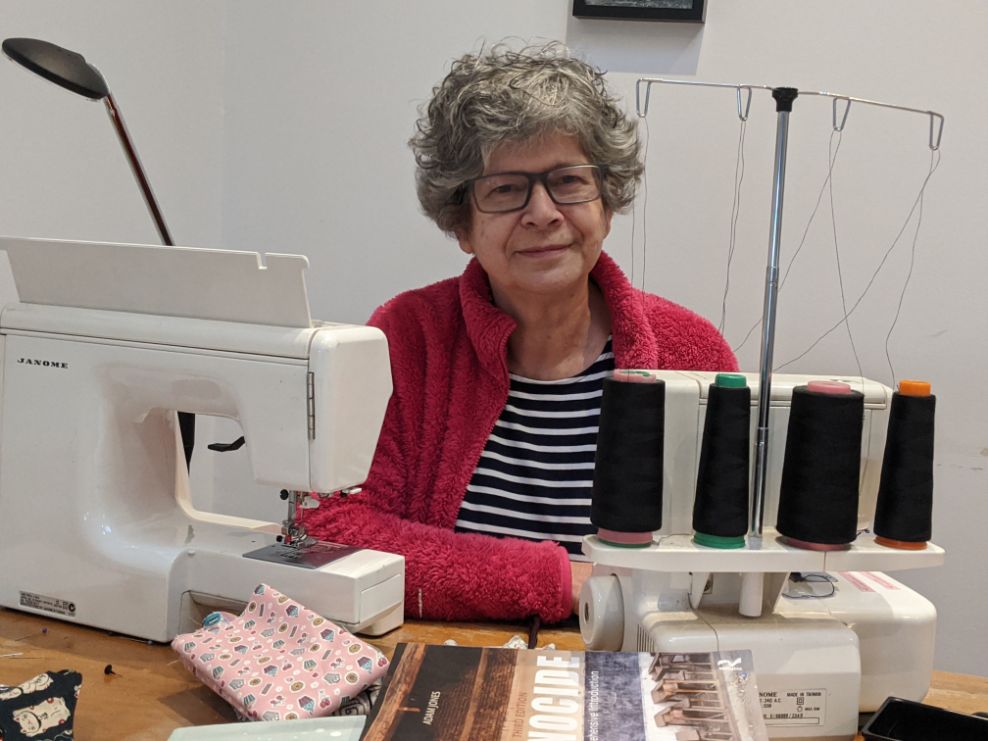As face masks become mandatory or strongly encouraged across Australia, a UNE History student and keen sewist has documented the material culture of these unique times.
Since April, Melbourne-based Masters student Kate Minkoff has been part of a national network of volunteer sewers fashioning much-needed medical scrubs and masks for our frontline health workers. Ever the historian, she deemed it important to record the effort for posterity.
"In the past, women have responded to health pandemics and wars by sewing, and COVID-19 is no different," Kate says. "The Facebook group that I joined, known as Ronascrubs, completed 6531 orders for medical scrubs for healthcare heroes across Australia. Hundreds of people responded to the urgent medical need, madly sewing."
As coronavirus spread around the world with a speed and mortality rate reminiscent of the Spanish flu, and personal protective equipment (PPE) became scarce while health professionals attempted to limit transmission, Kate dug into the archives.
She found that sewing bees and circles have promoted a degree of social cohesiveness during wars, in pandemics and at times of political upheaval in Australia's history. During World War I, committees managed patriotic sewing groups that met in school or church halls to make soldiers' uniforms, and linens and medical supplies for hospitals. In the midst of the Spanish influenza epidemic, Red Cross volunteers sewed masks and gowns for infected soldiers returning from the war. Women again volunteered to sew and darn for soldiers in World War II, and to make quilts for those serving overseas.
In all cases, the contributions were largely backgrounded and devalued as 'women's work'. However, these were significant contributions that need to be recognised.
"Today, the efforts of the female sewers during COVID have been better appreciated, with people sharing their scrub designs all over social media, and medical staff modelling the results and acknowledging their work. However, much of the sewing has gone unrecognised."
Kate said many Facebook groups had been set up to connect volunteer "sewing angels" with those needing scrubs.
"The Ronascrubs charity was launched in Melbourne with donations of fabric and patterns from industry, although many sewers provided their own materials, at some cost to themselves," she said. "The scrubs were colourful and made in an array of patterns with individual flourishes. For many sewers, it was a form of creative expression, akin to art, and some people made 50 or 60 pairs of scrubs, which is extraordinary.
"The websites acted as a resource, providing technical advice, and had the feel of a sewing circle of the past. Sewers regularly updated each other on how they fitted in sewing with their regular work, home-schooling children and coping with the restrictions of social isolation."
Scrubs tell a story
For Kate, it has been an opportunity to show appreciation for the dedication of frontline emergency workers. "I see them as superheroes and it was an opportunity to acknowledge their significant and selfless acts, to remind them that there were people thinking of them, and to play my part, however small," she said.
It was also interesting to reflect on the artistic element of the volunteer sewing.
"There is the creative process of choosing fabrics and colours and putting them together, the design, construction, engineering and maths - I seeing all those elements as part of art," she said.
"Maybe, with the passage of time, we will look back on these scrubs as pieces of material culture or historical artefacts. They might be donated to a museum and tell a story in future about how we lived with COVID-19."


